*NURSING > DISCUSSION POST > NR 507 WEEK 3 CASE STUDY DISCUSSION PART ONE (All)
NR 507 WEEK 3 CASE STUDY DISCUSSION PART ONE
Document Content and Description Below
NR 507 WEEK 3 CASE STUDY DISCUSSION PART ONE A 17-year-old African American female from the inner city complains of severe chest and abdominal pain. Upon examination, the attending physician performs... an EKG, chest x-ray, and an abdominal and chest clinical examination and finds nothing. Assuming she is drug seeking, he sends her home. She comes back to the ER 4 hours later and now you see the patient. She explains that she was running track this past afternoon at school and that despite being very hot (100 F) she pushed on. Afterwards, she starts feeling extensive pain in her chest and abdomen. She has jaundiced eyes, her blood pressure is 98/50, pulse is 112, T = 99.9 F, R = 28. The pain seems out of proportion to the physical findings. During a review of her medical history, she tells the provider that she has history of sickle cell anemia. At this time, it is determined that she is in a sickle cell crisis. Week 3 – Discussion 1 – Initial Post Dr. Arredondo, What is the etiology of sickle cell anemia? Sickle Cell Anemia is a subcategory of Sickle Cell Disease. Sickle cell disease is an inherited condition in which a person inherits two abnormal hemoglobin genes (National Heart, Lung, and Blood Institute, 2017). When a person has two hemoglobin S genes (Hemoglobin SS), the resulting condition is known as sickle cell anemia (NIH, 2017). Sickle cell disease most commonly affects individuals of African ancestry (NIH, 2017). One in thirteen African American babies is born with sickle trait and one in 365 is born with sickle cell disease (NIH, 2017). Describe in detail the pathophysiological process of sickle cell anemia. Sickle cell disease is an inherited condition arising from a mutated beta-globin chain within the hemoglobin molecule (US National Library of Medicine, 2018). Individuals born of parents who are sickle cell trait carriers, would have to inherit two copies of the sickle hemoglobin gene in order to have sickle cell anemia (NIH, 2017). Individuals born with one copy are said to be born with sickle cell trait where children born without a copy are said to have two normal copies of the gene (NIH, 2017). Individuals with sickle cell anemia have sickle shaped red blood cells, known as Hb S (McCance, Huether, Brashers, & Rote, 2013). Unlike normal red blood cells which contain normal hemoglobin, sickle shaped blood cells are less flexible and may stick to the walls of blood vessels (NIH, 2017). The hemoglobin in sickle cells becomes modified in the absence of oxygenation and hydration which results in elongating and hardening the cells into a familiar sickle shape (McCance et al., 2013). The clogging of sickle cells within the vessel can deprive tissues of oxygen leading to episodes of severe pain (NIH, 2017). Additionally, within the body, the process of regenerating depleted blood cells is diminished. With new cells replacing old cells ......continued... [Show More]
Last updated: 1 year ago
Preview 1 out of 2 pages
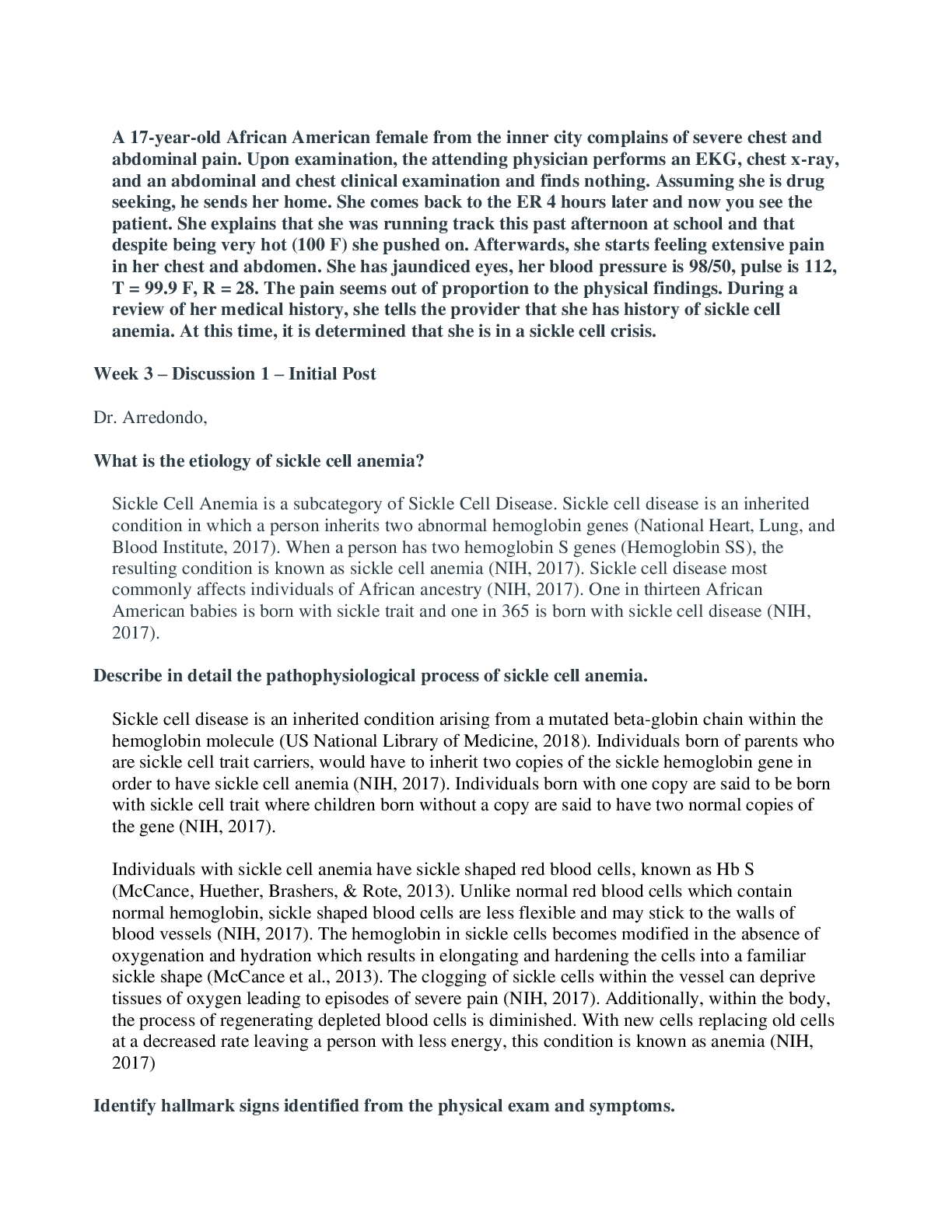
Reviews( 0 )
Document information
Connected school, study & course
About the document
Uploaded On
Feb 13, 2021
Number of pages
2
Written in
Additional information
This document has been written for:
Uploaded
Feb 13, 2021
Downloads
0
Views
34

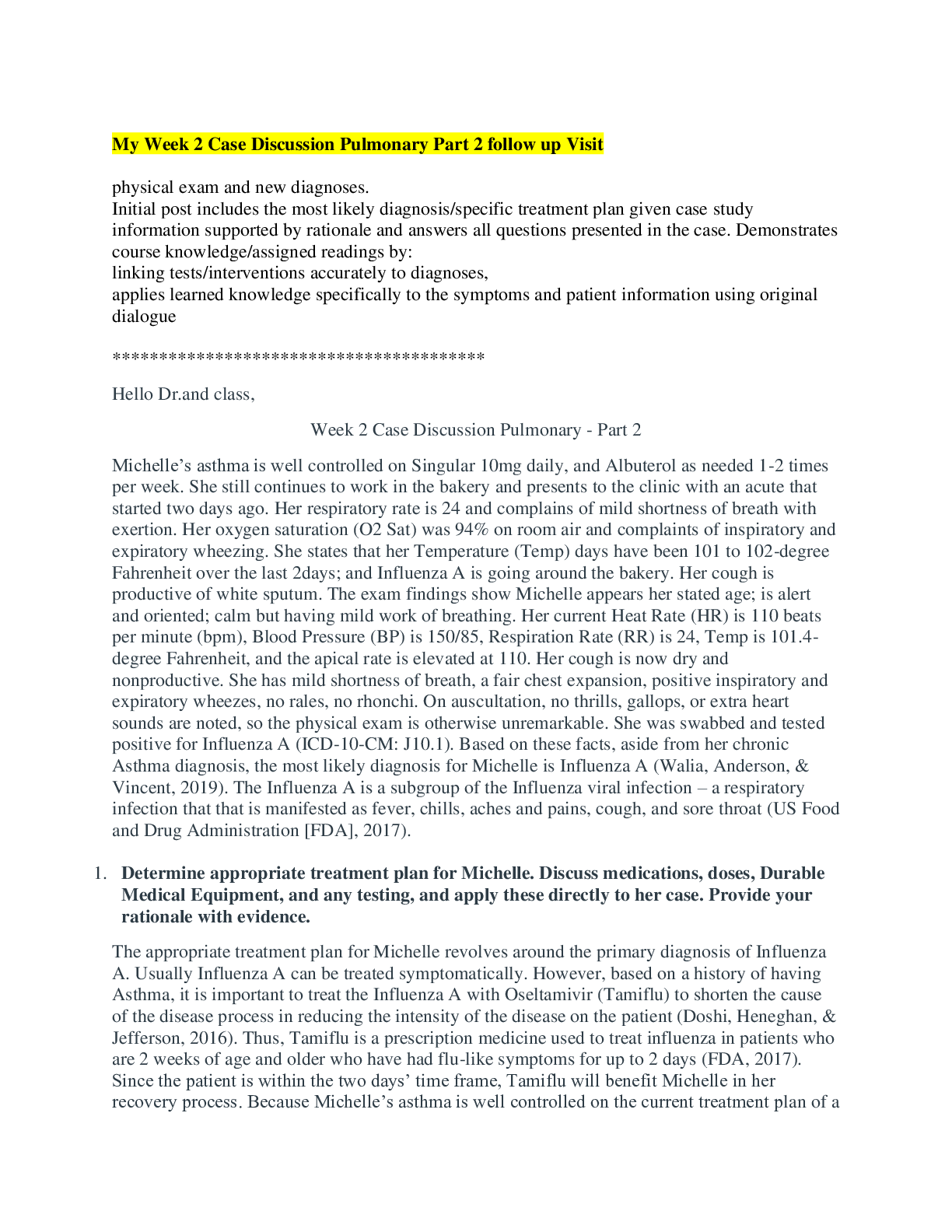
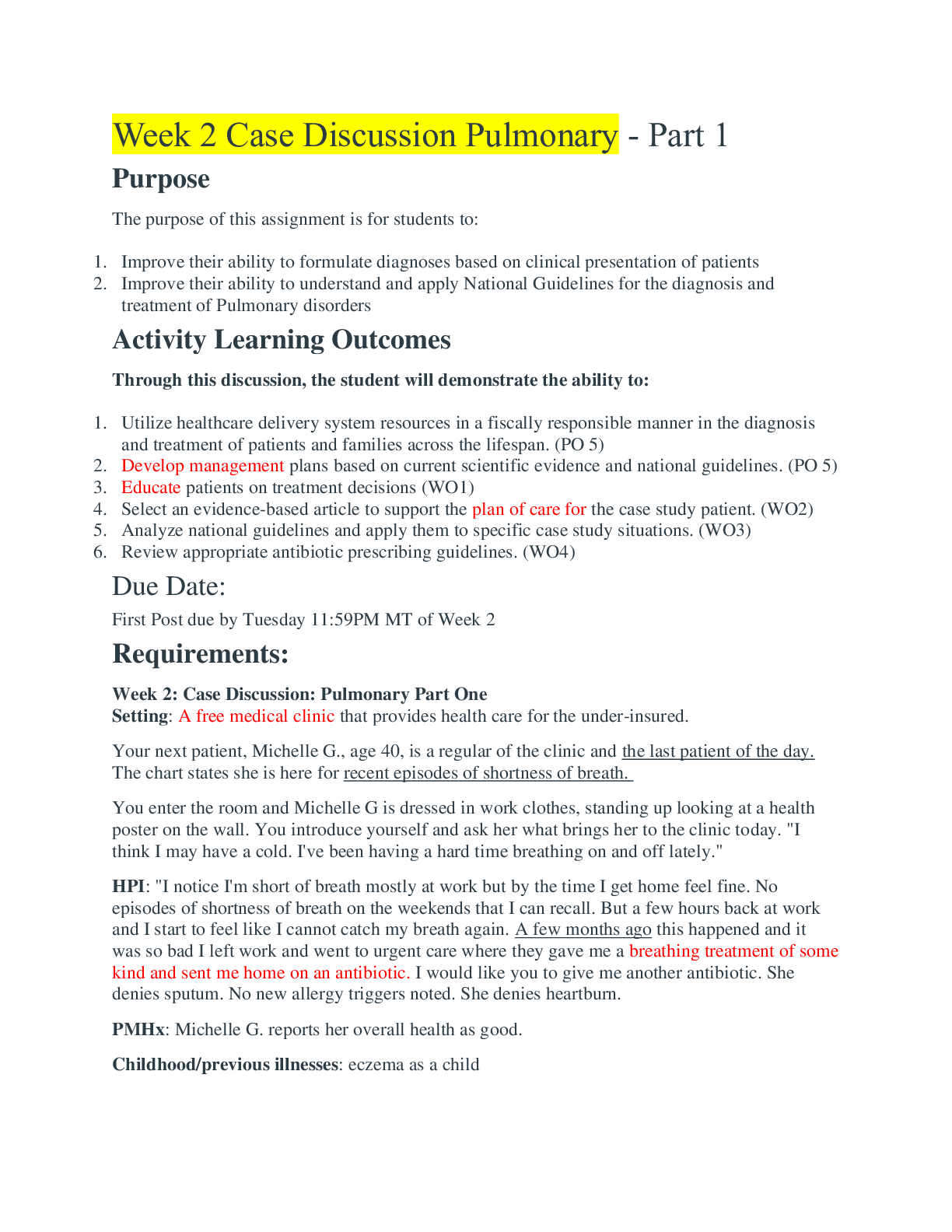
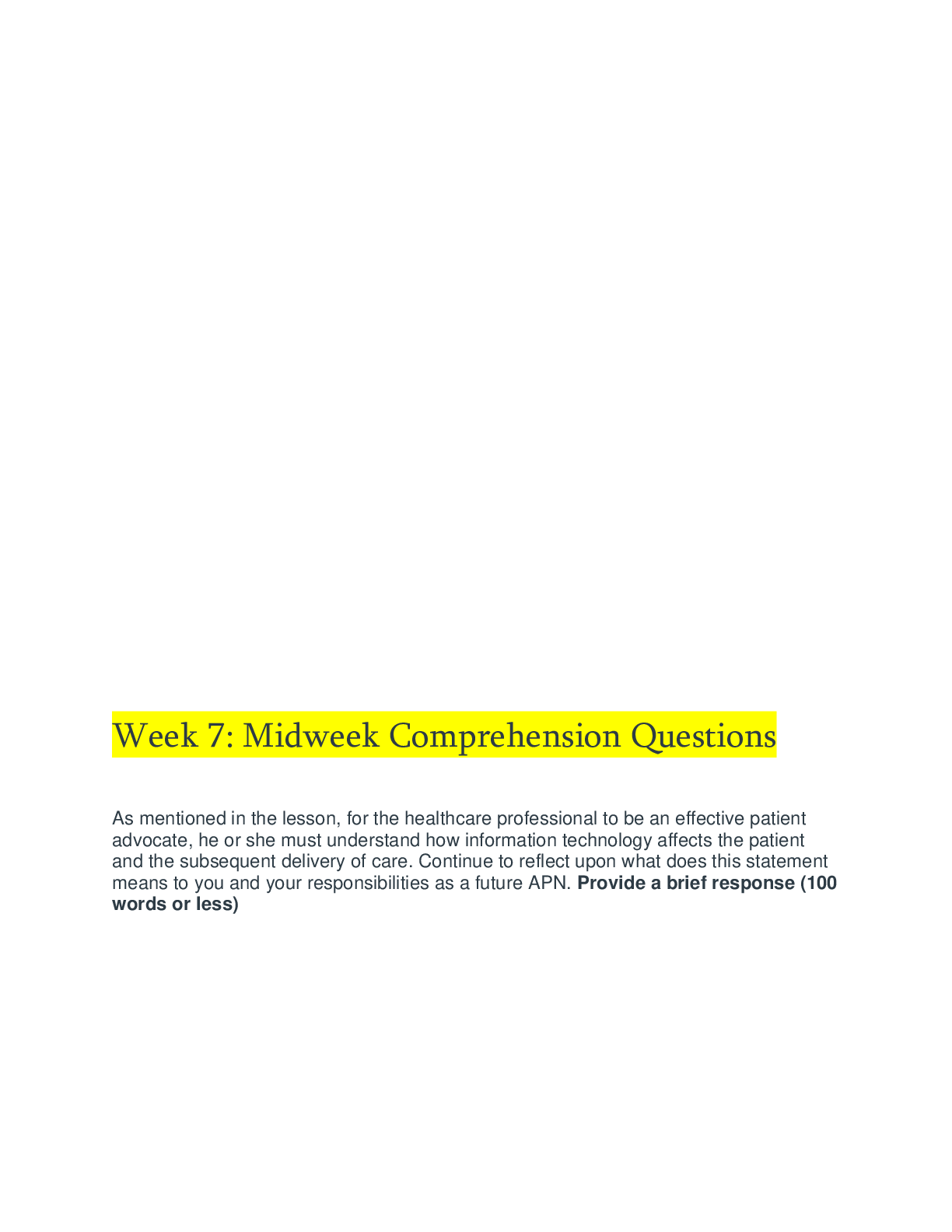
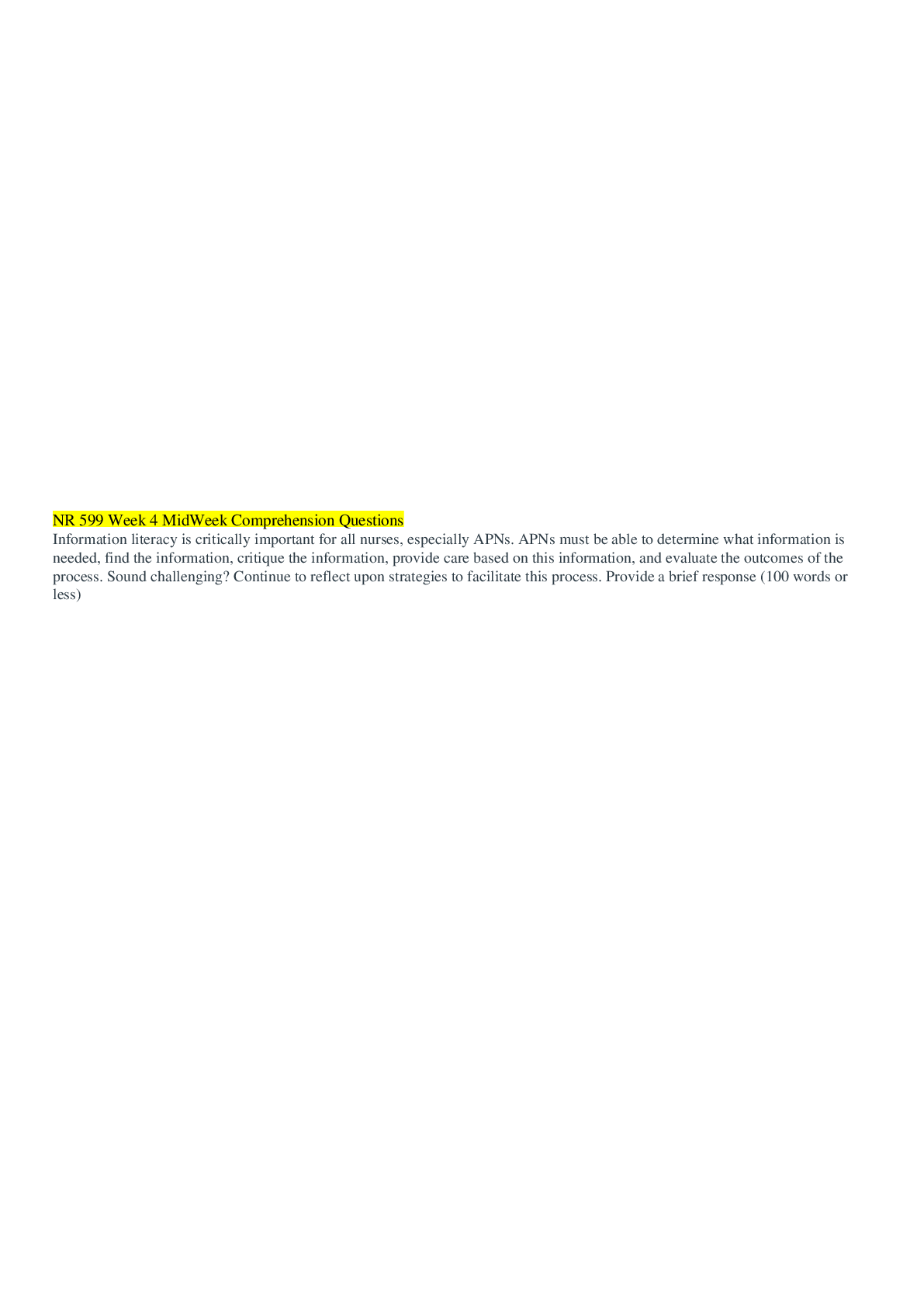



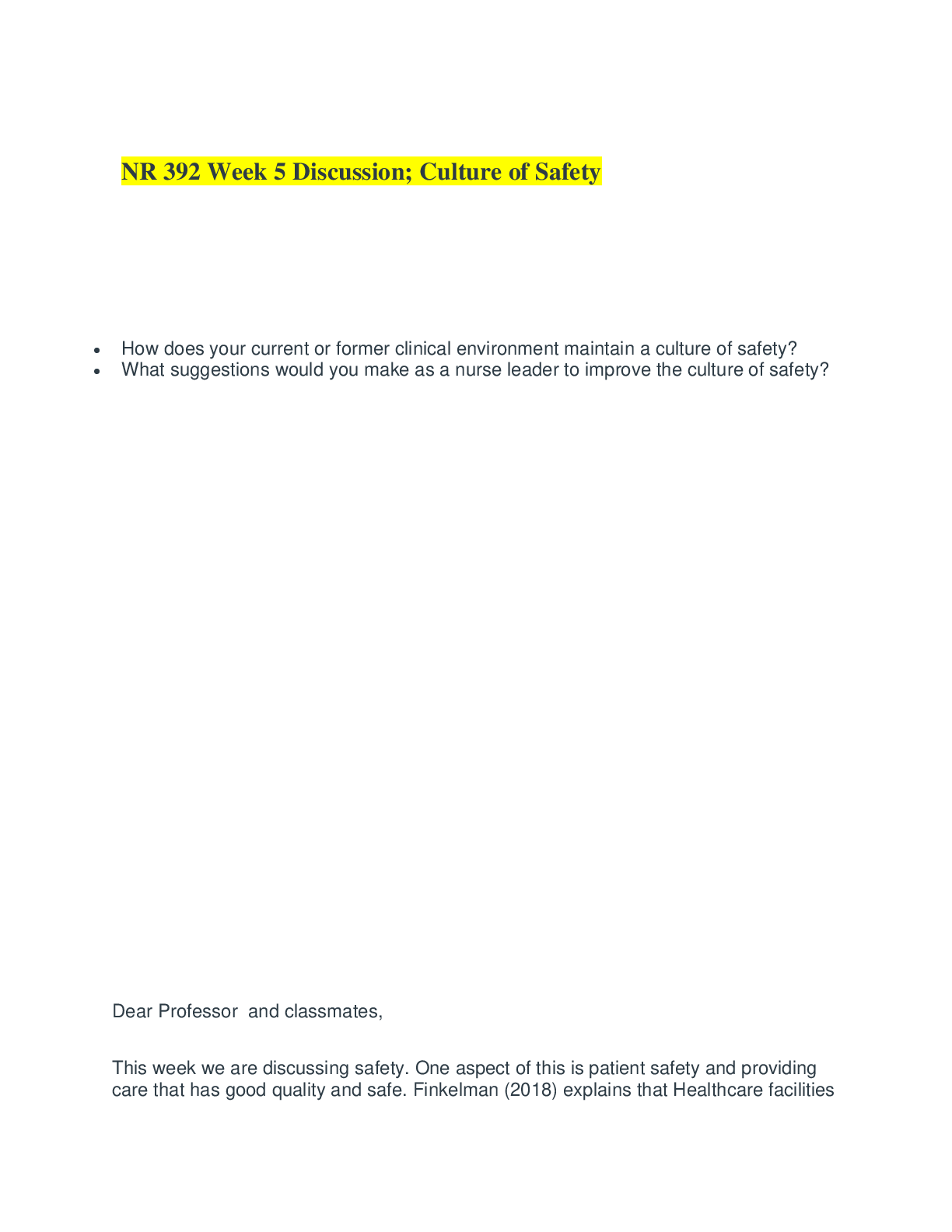
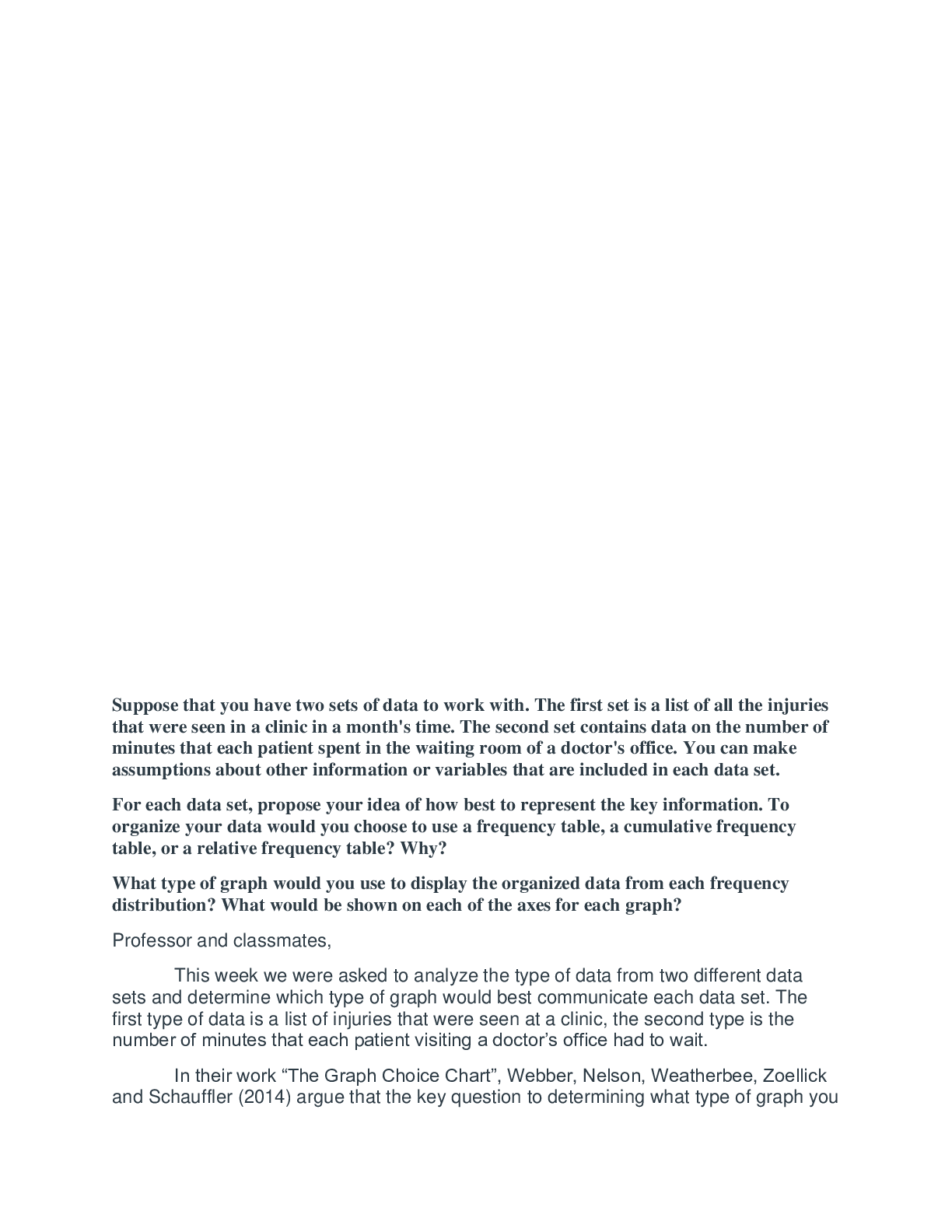
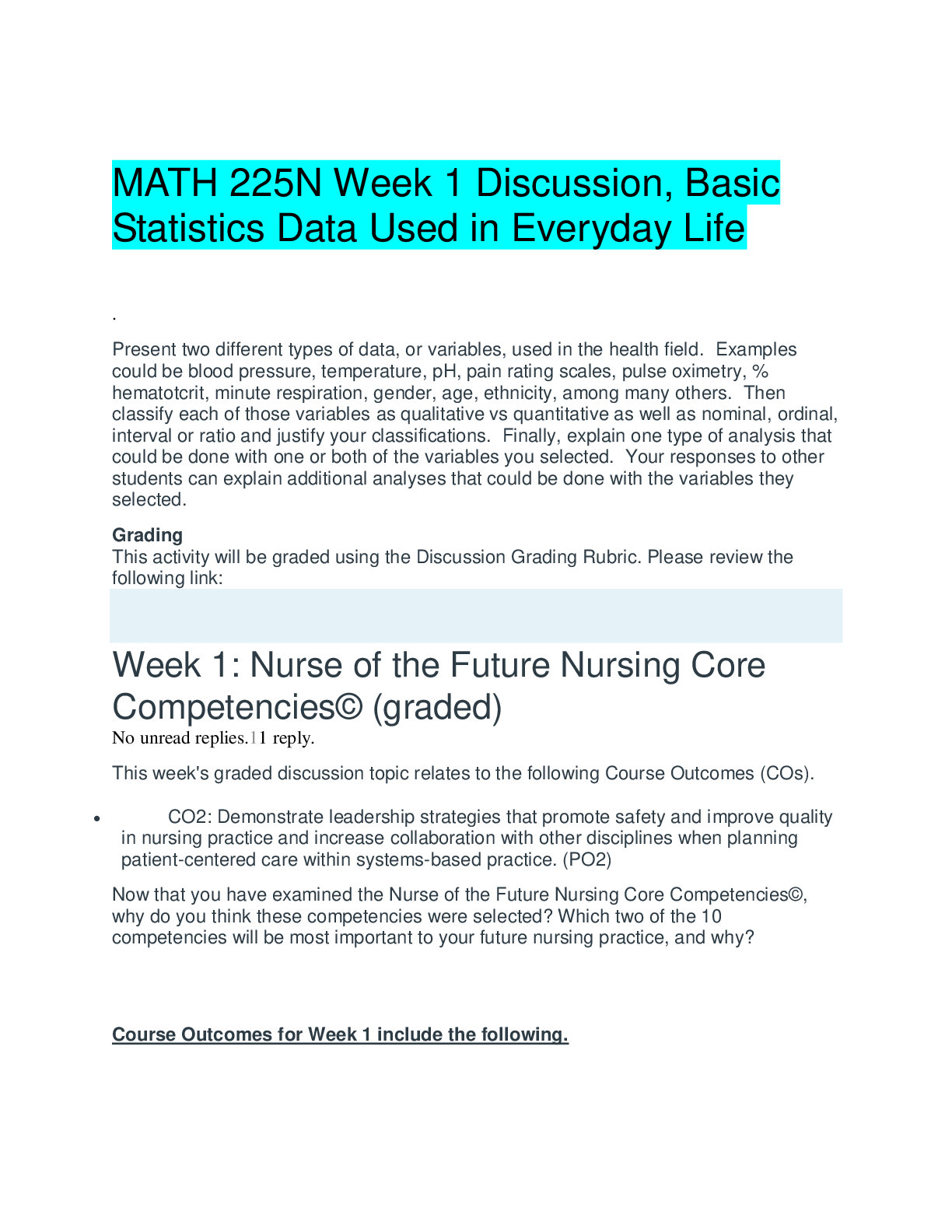
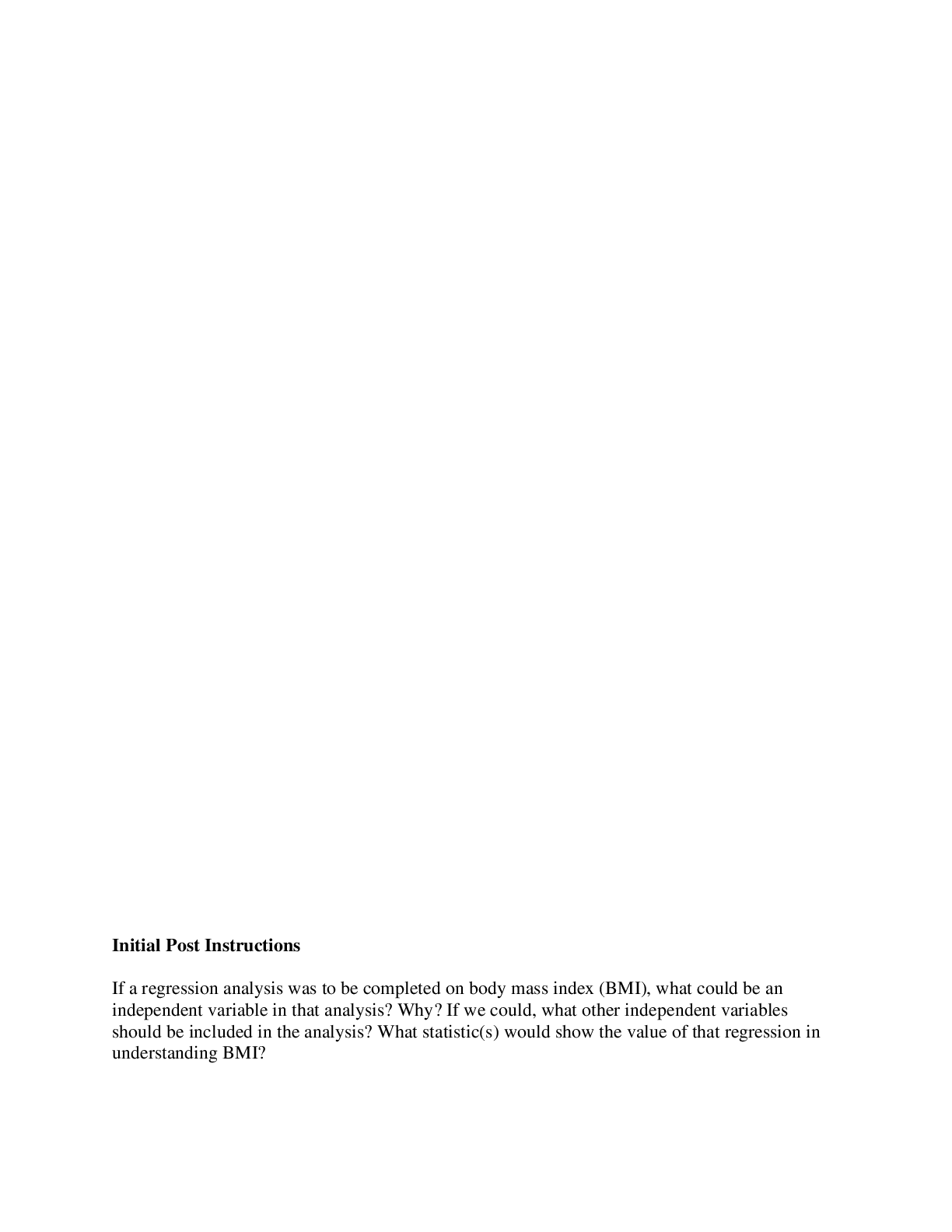

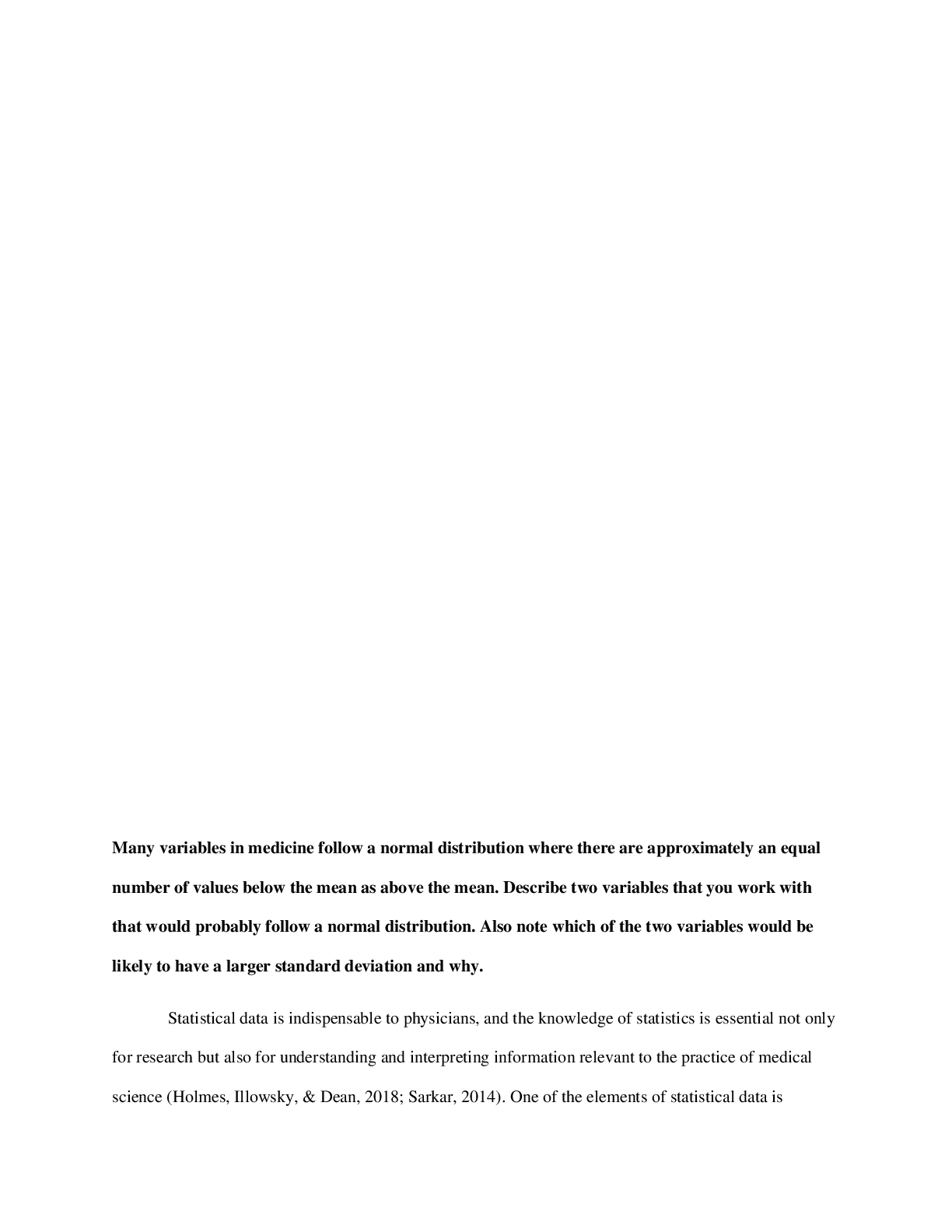
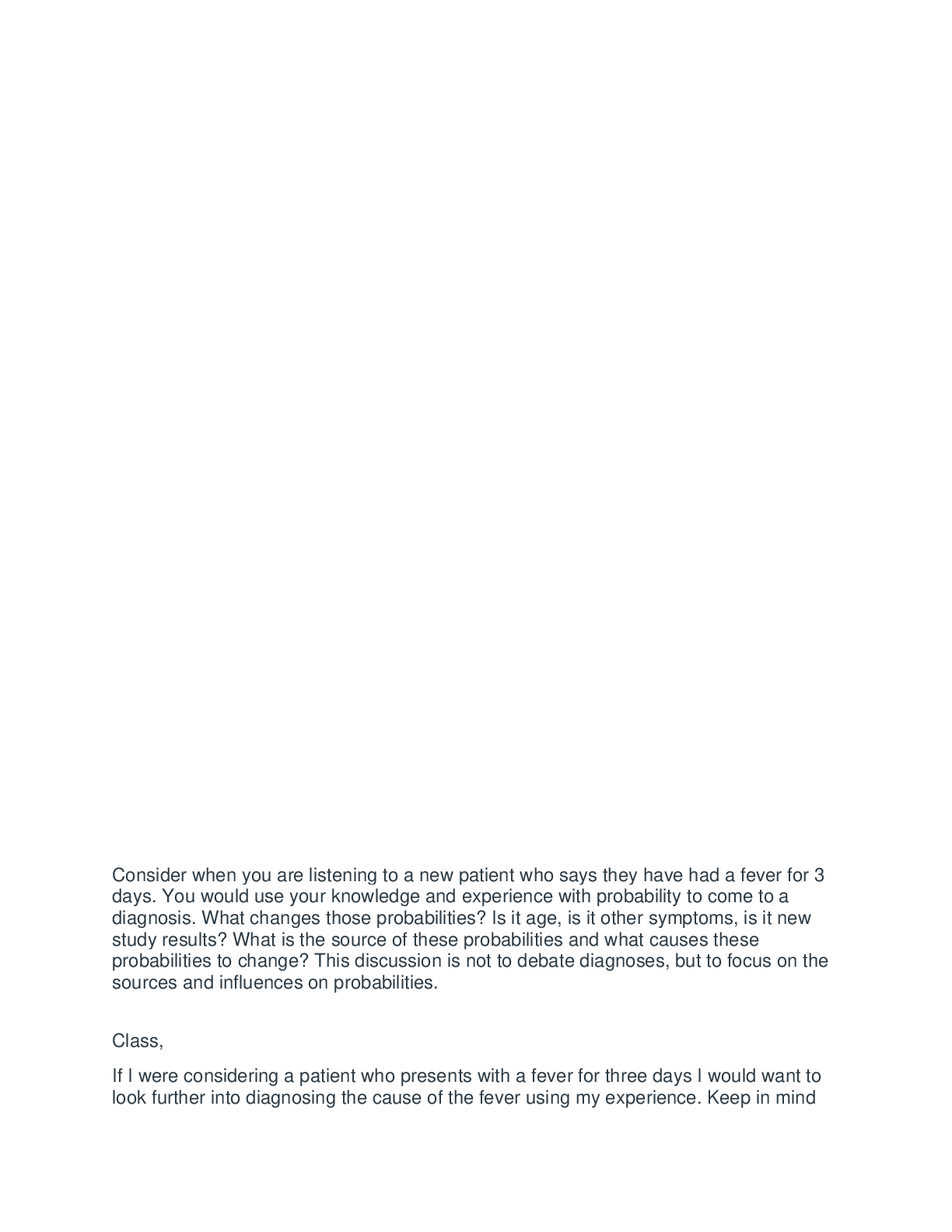
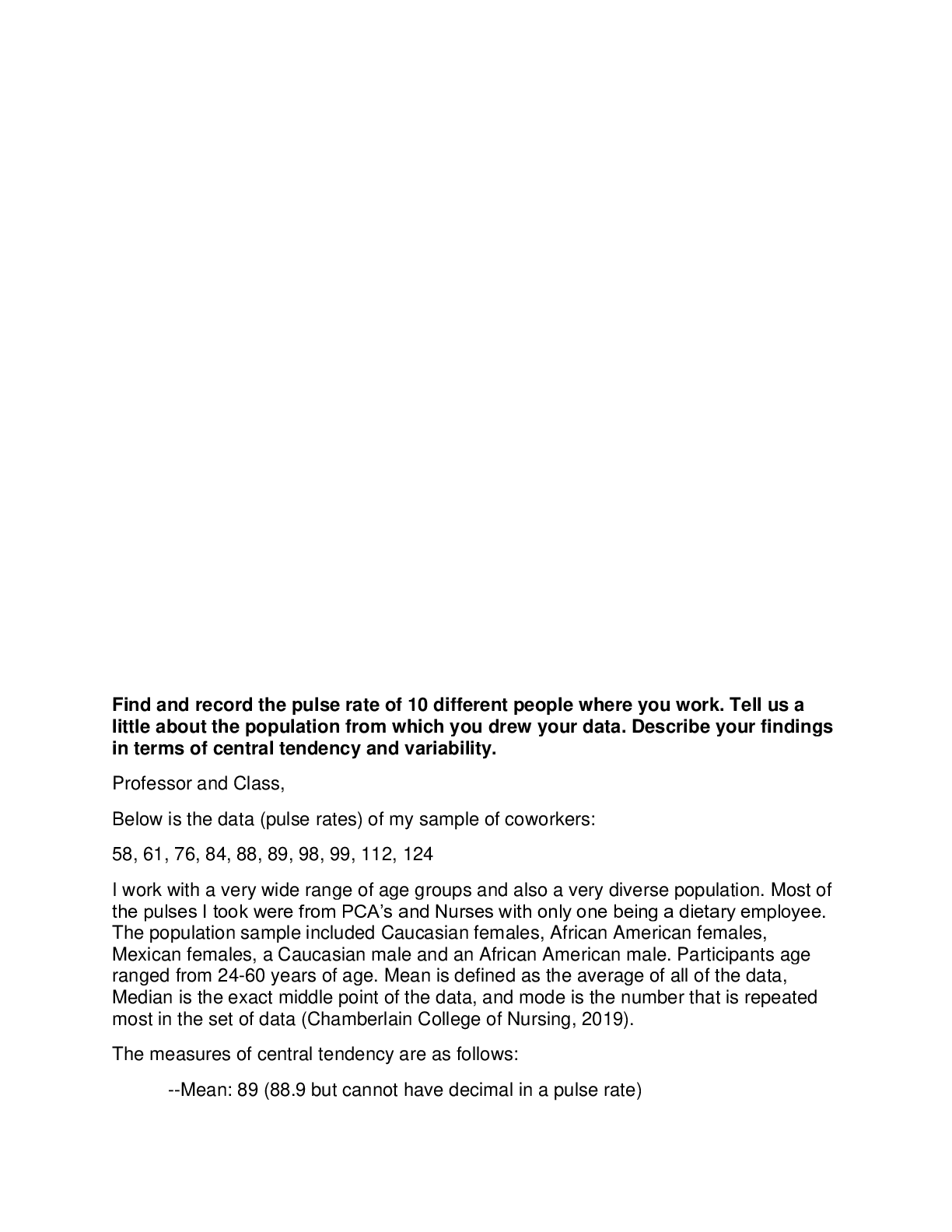
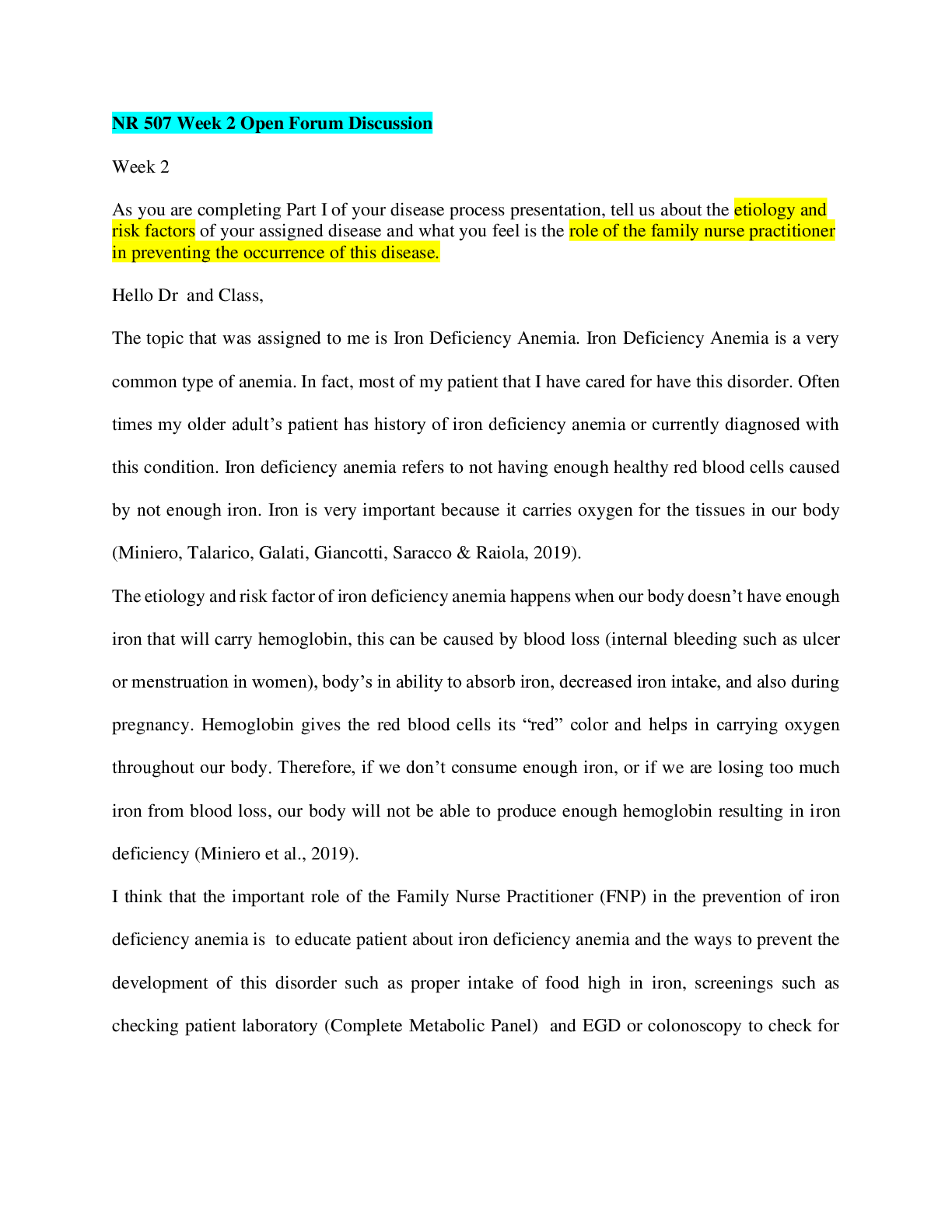
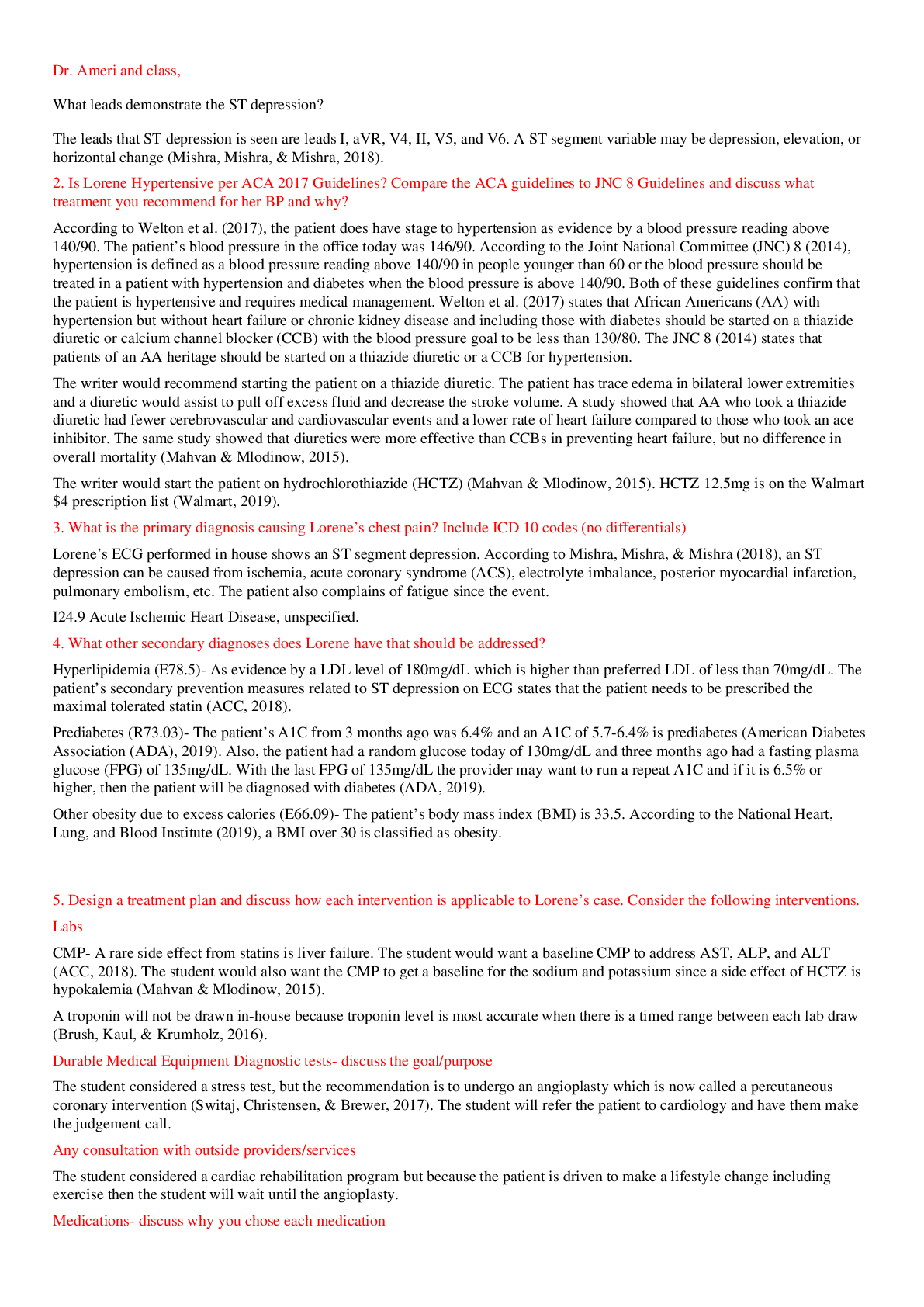

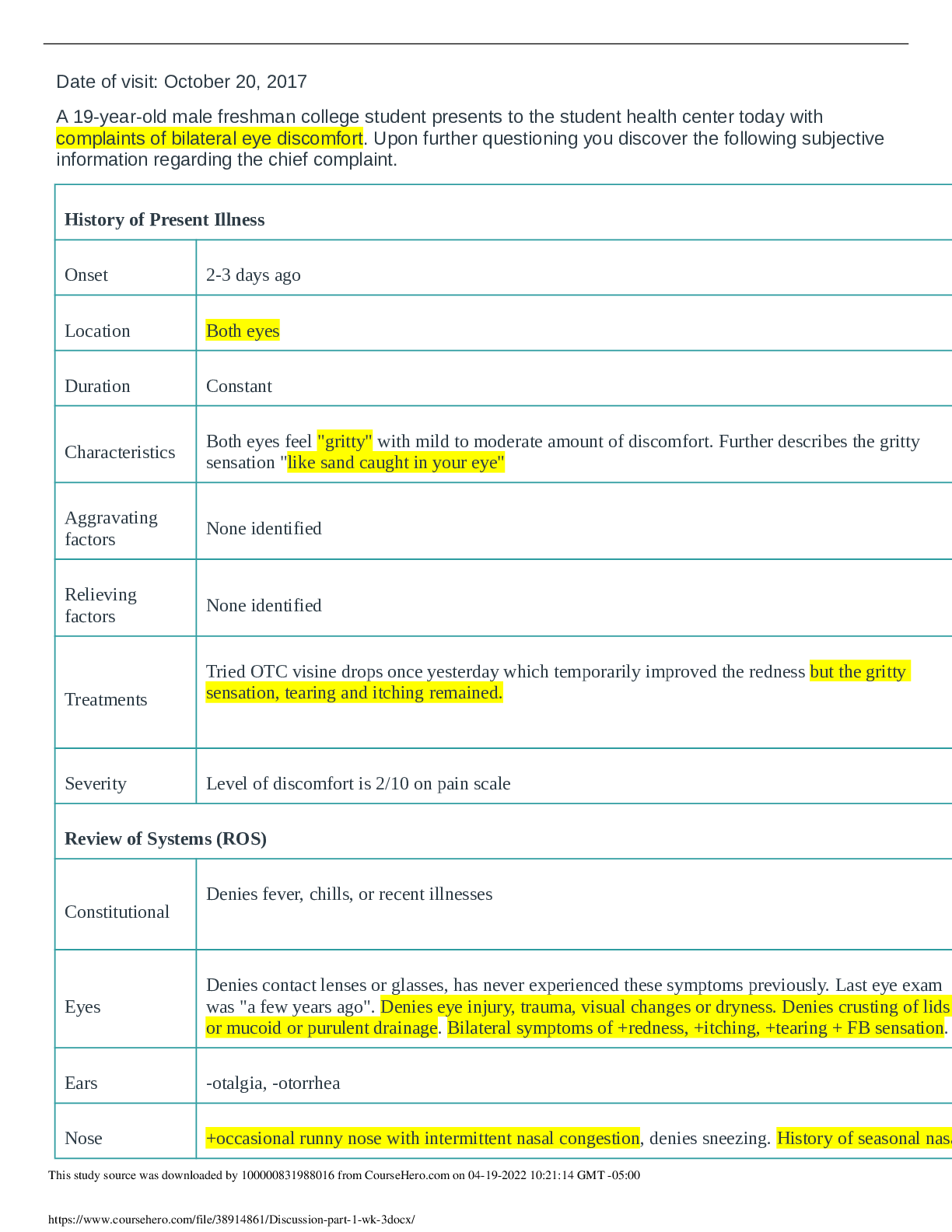
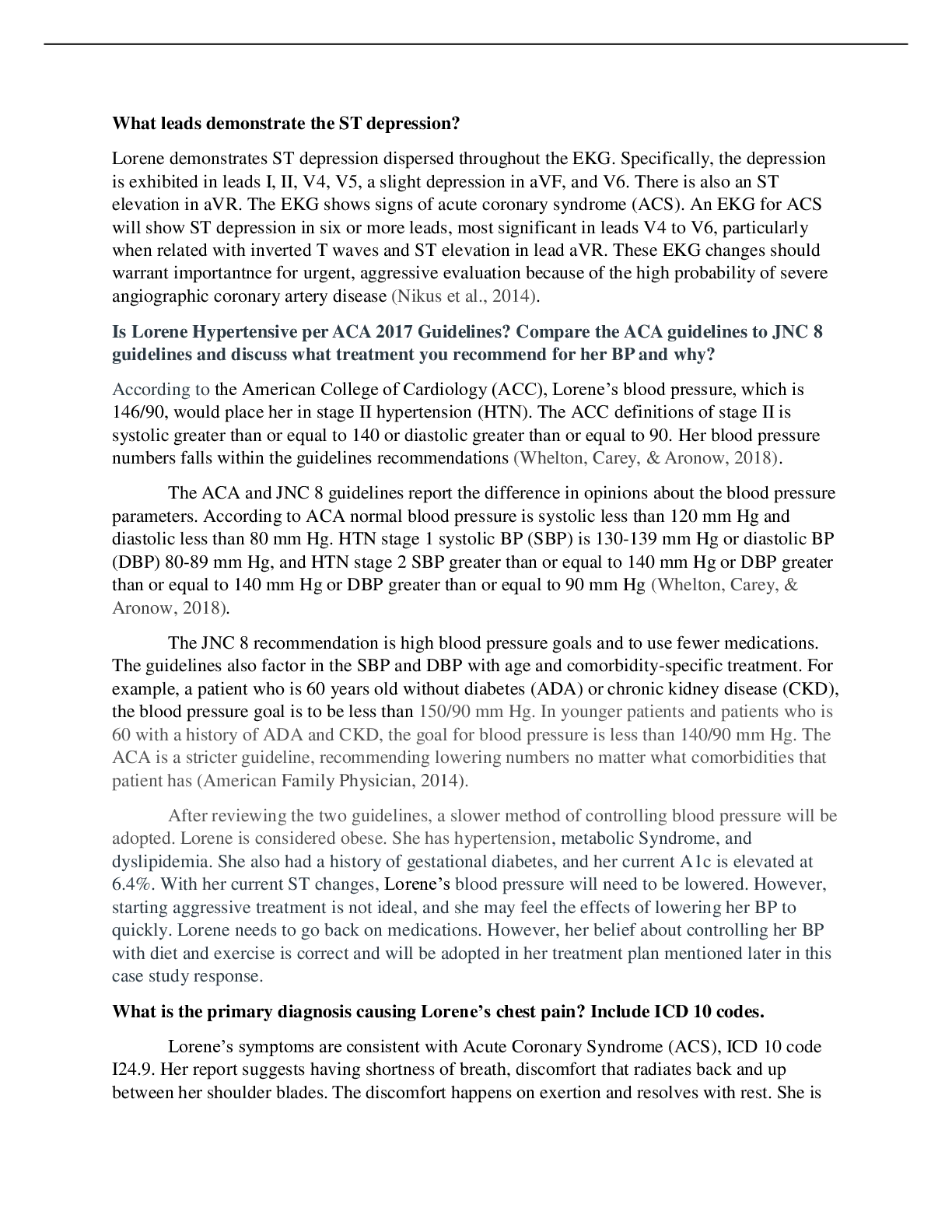
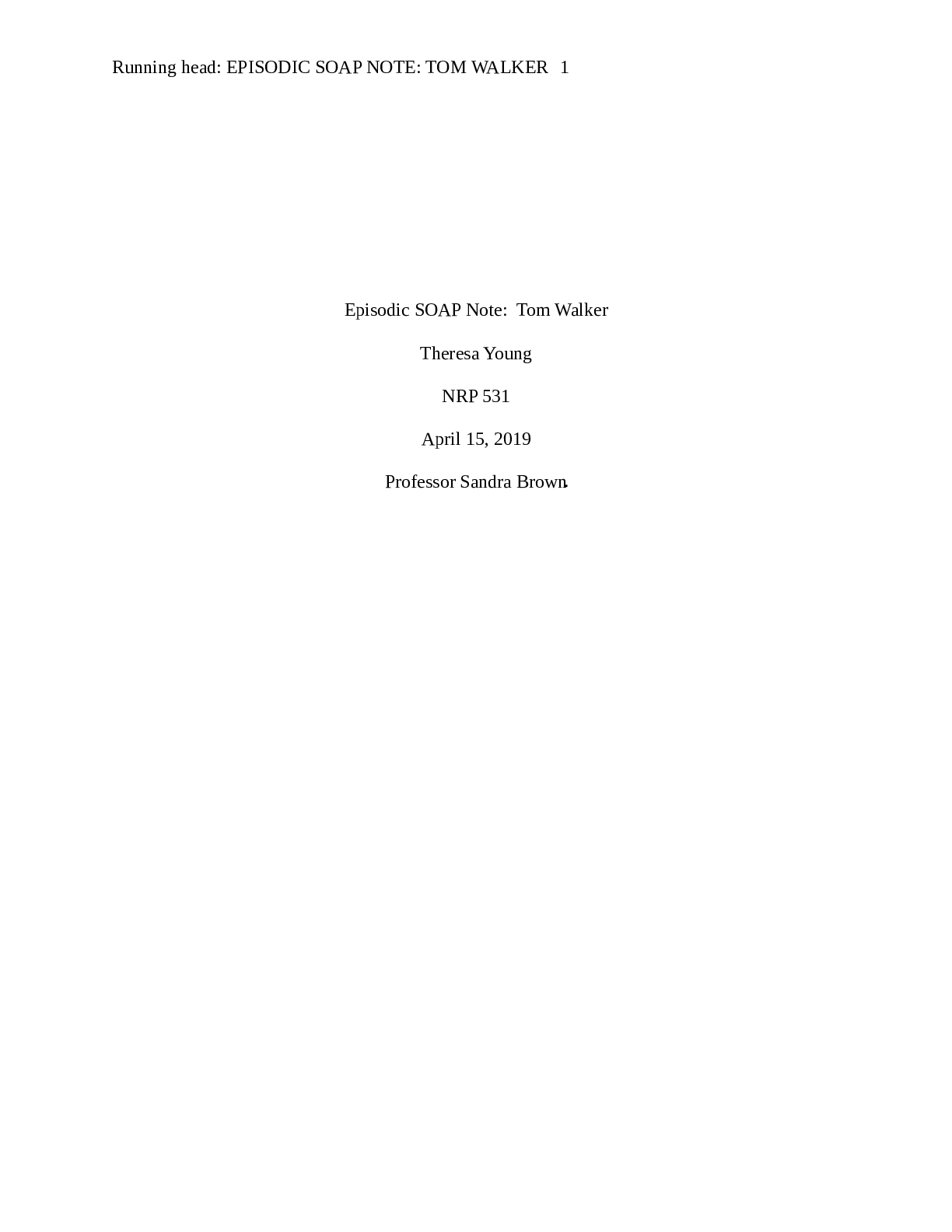
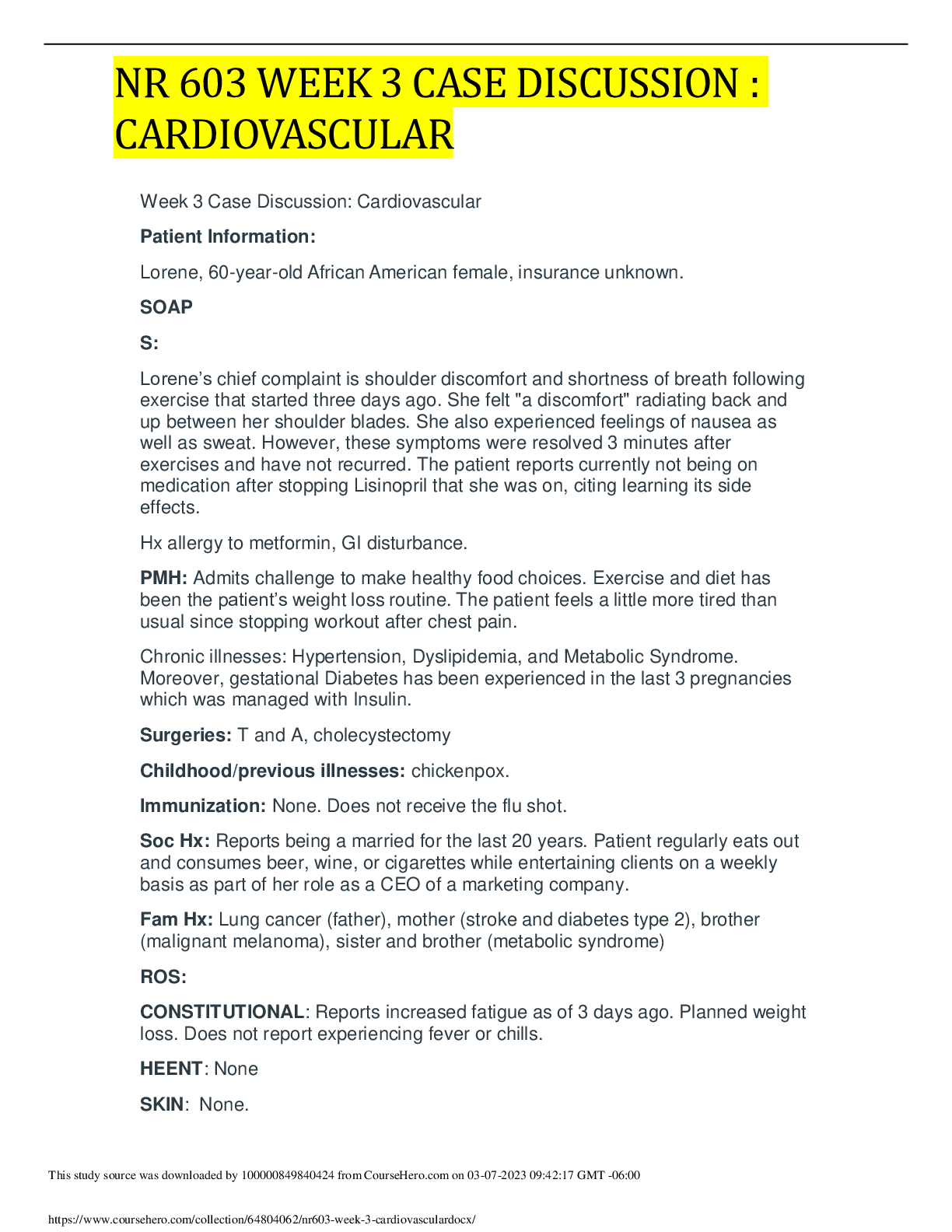
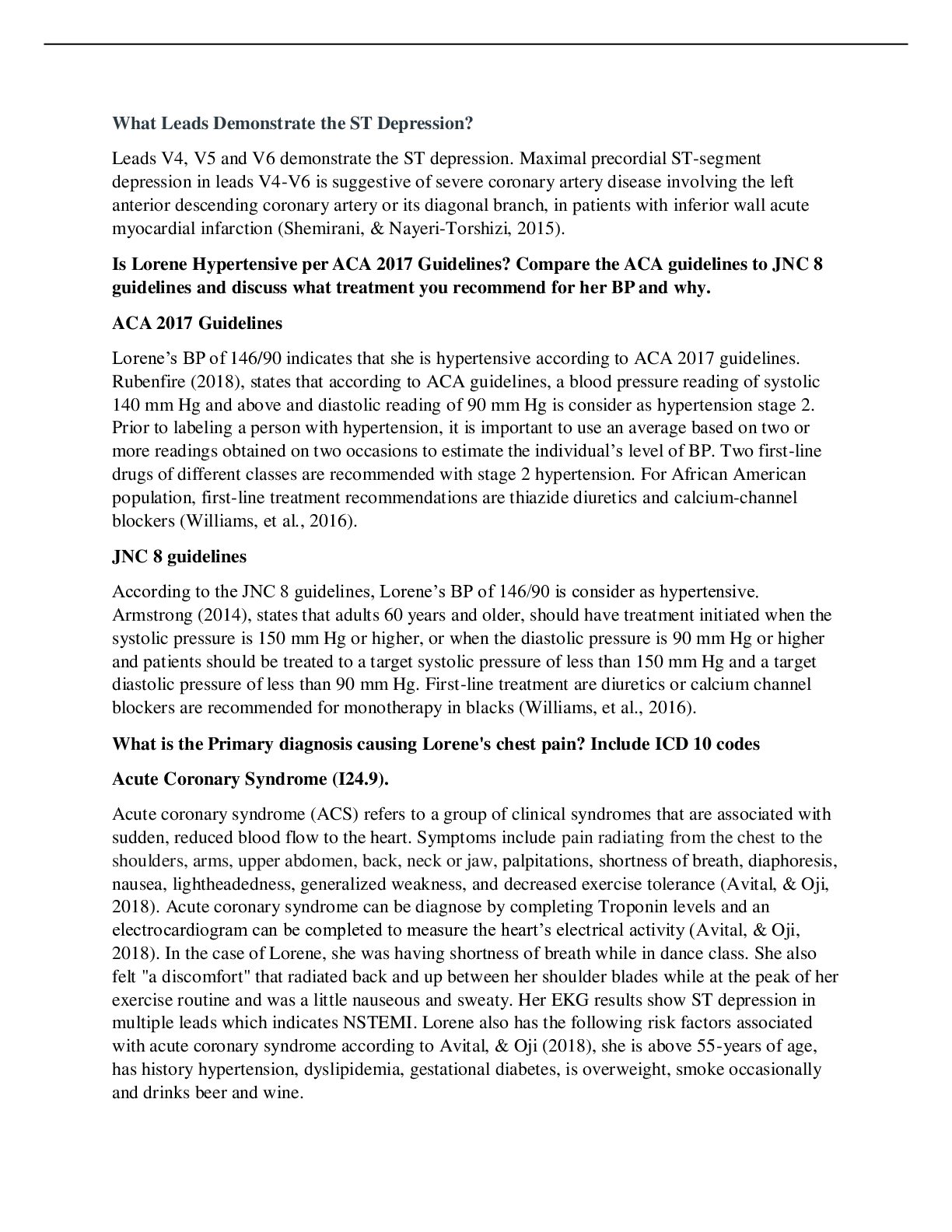
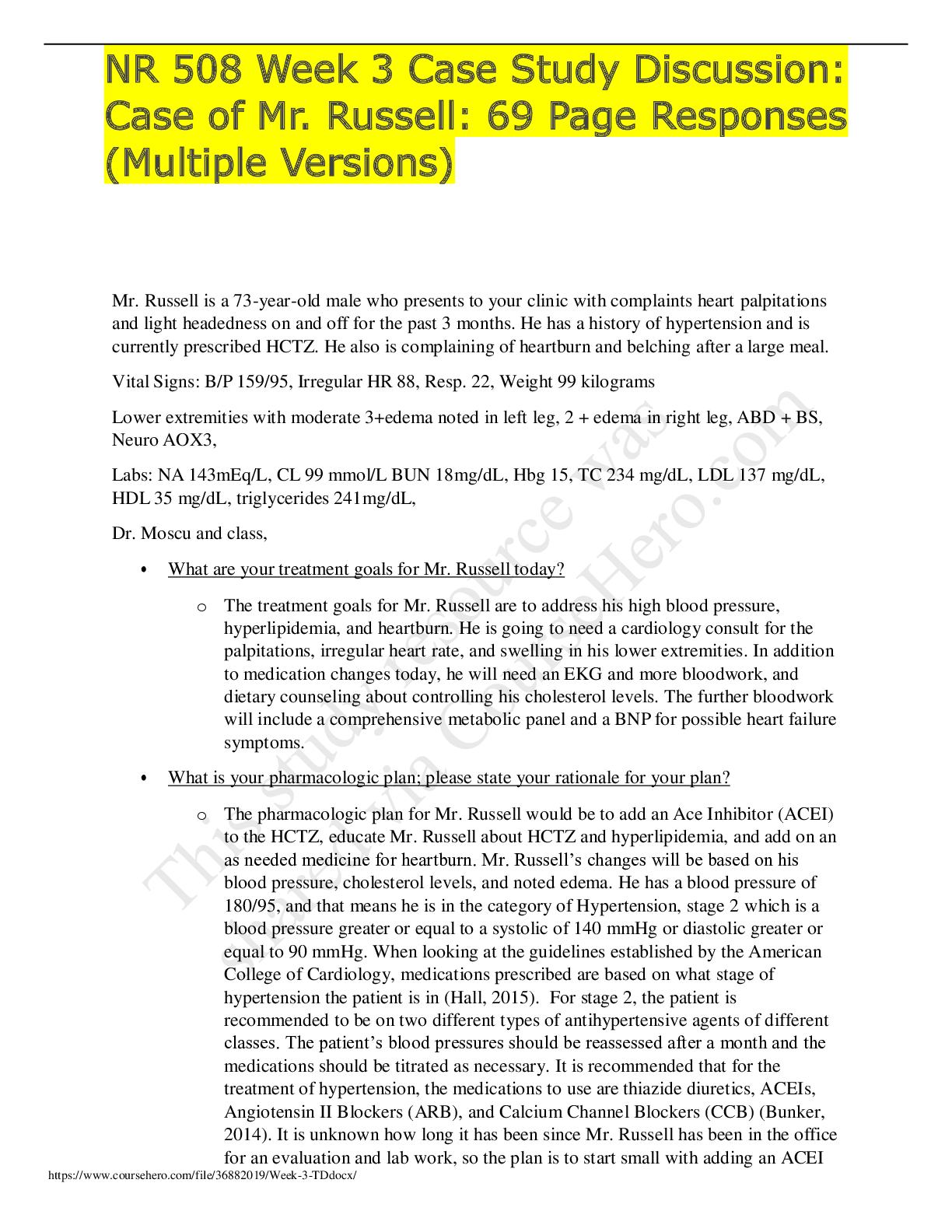
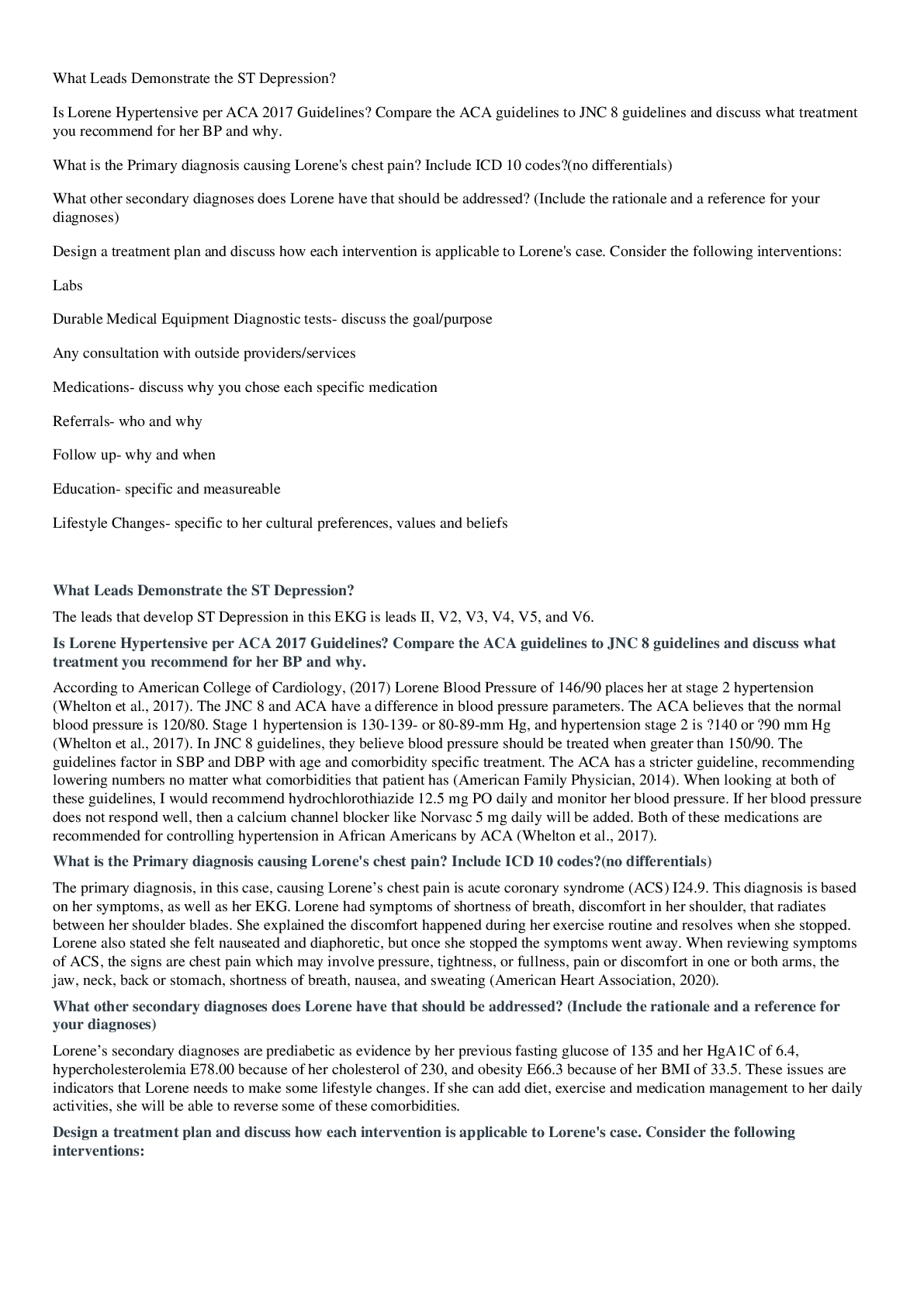

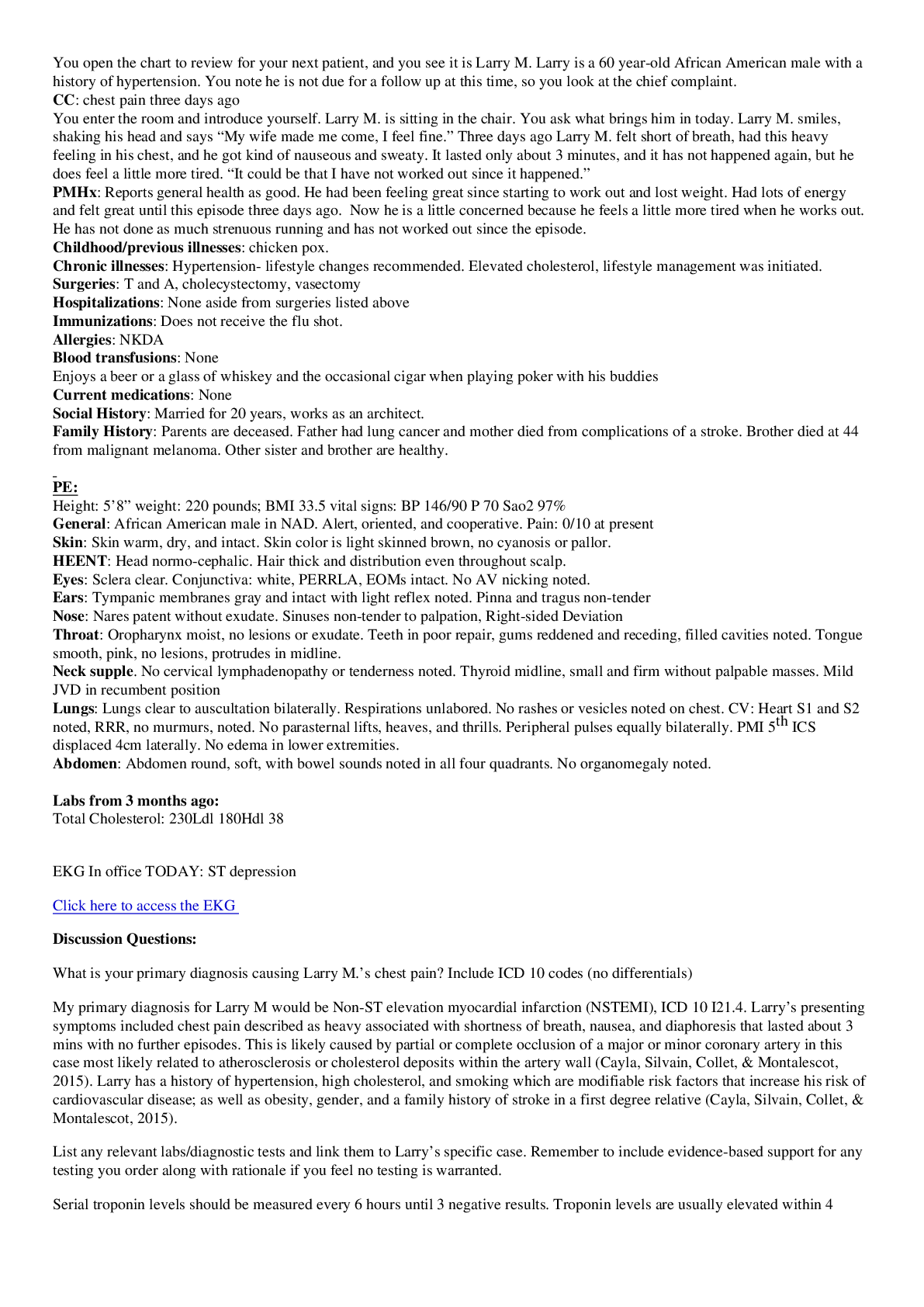
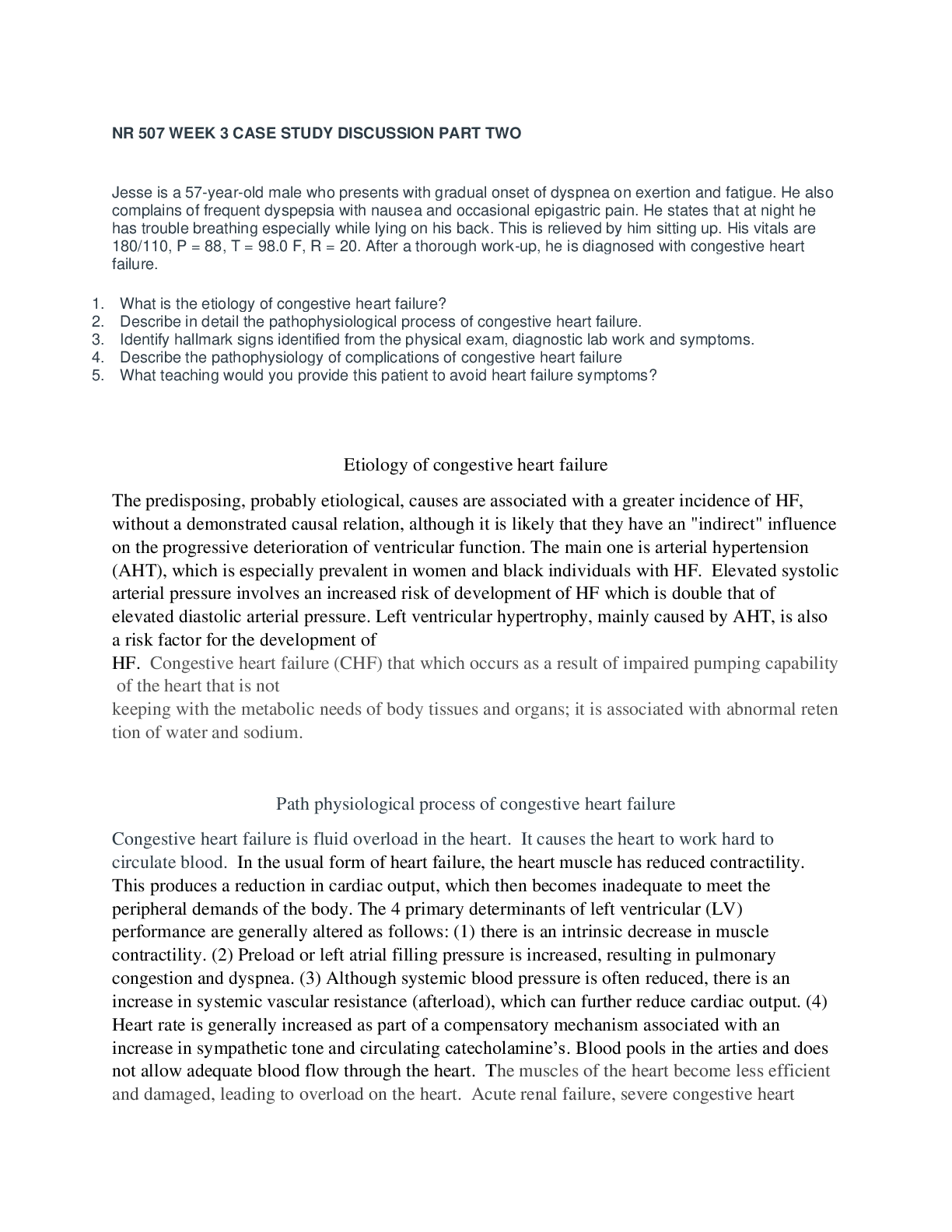
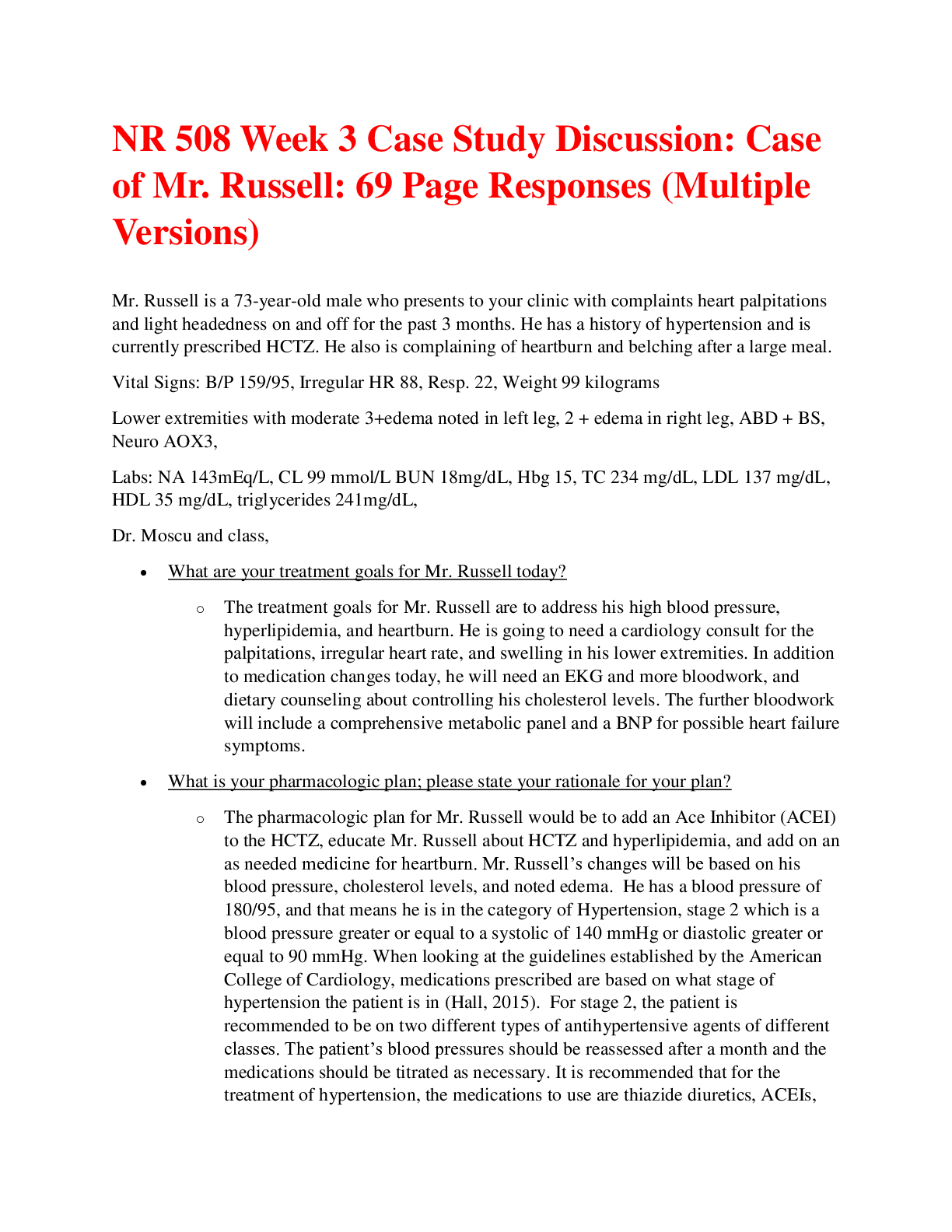

.png)

.png)

